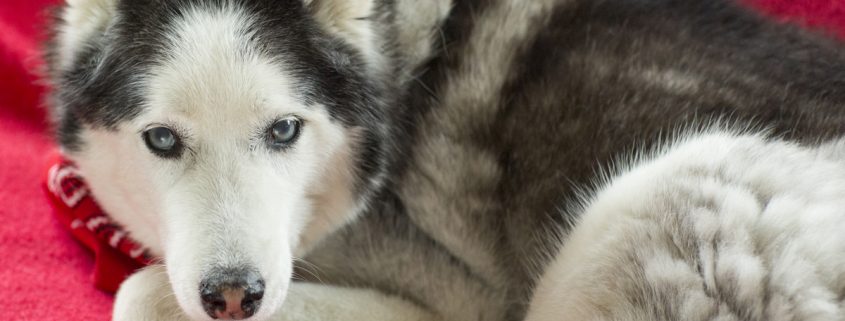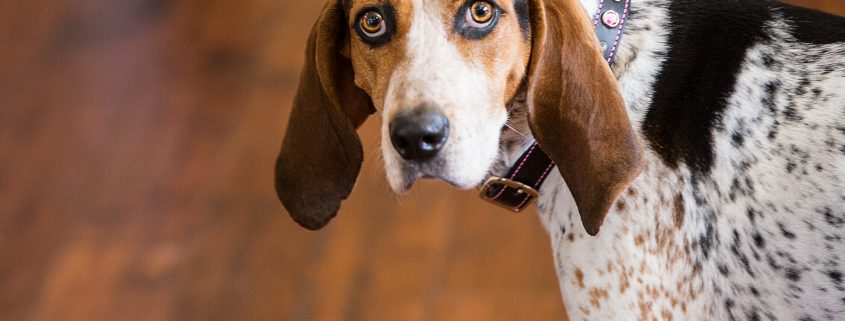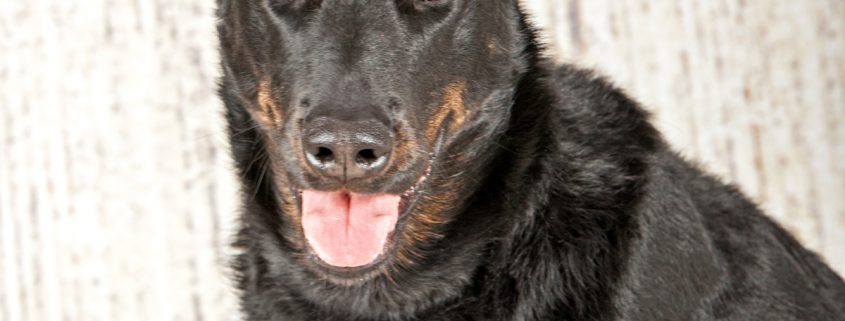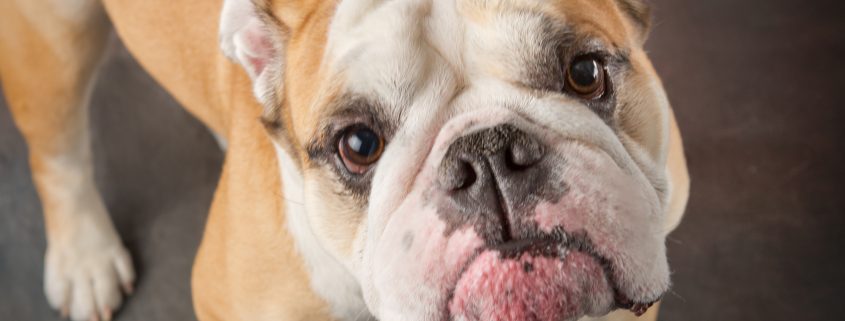Tag Archive for: Breed Profile
By JESSICA PAIRRETT, Freelancer
A permanent smile outlines the Samoyed’s face, matching its happy, warm personality. But don’t let this gorgeous dog fool you: he’s not just a pretty face. In fact, the Sammy or Sam, as the breed is known among fans, is a highly functional, hardy dog.
History
The Samoyed takes his name from the nomadic tribe who, thousands of years ago traveled from the Iran region to the tundra of Siberia. Once there, the dogs and Samoyed people shared trust as the dogs earned their working status. In addition to Artic exploration, the Sammy pulled sleds, herded reindeer and hunted and guarded property.
These dogs became companion animals, babysitting children and warming beds on cool nights. Extremely cold nights were three-dog nights, in which three dogs would be placed on the bed to warm its occupants, explains Maria Kirylo, state coordinator of Playing Again Sams Wisconsin Samoyed Rescue.
According to the American Kennel Club, during the early 1900s, the breed was brought to England to breed enthusiast Queen Alexandra. Present-day American and English Samoyeds are descendants of her dogs. Today, the Samoyed is one of the purest breeds around, the most similar to the primitive dog, with no fox or wolf DNA.
At Home
“Samoyeds make terrible, terrible outdoor dogs,” Kirylo says. They are very much part of your pack and want to be with their families. Gentle, friendly and easygoing, the Sammy is said to love everyone—intruders included. Needless to say, the Sammy will adapt to life perfectly fine with children or the family cat.
Activities
Speaking from firsthand experience, Kirylo advises that “if you can’t walk your dog several miles a day, don’t get a Samoyed.” Besides Wisconsin’s three warmer seasons, her four Sams will walk all winter long. And they do need the exercise. She says these dogs are sometimes labeled as stubborn, but it comes down to motivation. Make sure to give your Sammy an interesting job to do, one that keeps him mentally and physically active.
Mindset
Because they are working dogs, Sams instinctively need daily exercise. A fenced-in yard is nice, but long walks are even better. Showing their very high intelligence, Samoyeds also participate in agility. “They are up for anything, any time, any moment, but they know how to relax,” says Kirylo She also notes that Sams “bark a lot and love to dig.” If you want a perfect lawn or garden, the Samoyed might not be ideal for you. “They’ll eat anything,” she laughs, as she pictures those tempting vegetable gardens.
One of Kirylo’s favorite characteristics of the Samoyed is that it takes a lot to ruin this happy-go-lucky dog. In rescue, she sees the dogs’ different backgrounds, but the dogs exhibit healthy levels of trust. Sure, they can bite and snap like any dog, but that’s just not who they are.
Health
Samoyeds are typically healthy. However, almost all tend to get weak in the back end, she says. Keeping your dog at a healthy weight can prevent this. Glaucoma can develop and incidences of diabetes are a little high, but cardiac issues are not common.
Coat & Grooming
Stemming from his ancient beginnings, a Samoyed’s gorgeous coat repels water—it was a necessity to stay dry amid those artic temps. If he rolls in the mud and it dries on the coat, the mud will flake off as if the dog’s coat is nonstick. You’ll be left with a white-turned-slightly-gray dog.
Overall, the Sammy’s coat requires a great deal of care. Weekly brushing (if not more) is needed, especially during the once or twice a year seasonal shed, reports the AKC. Plenty of hair is shed but unlike Lab or cat hair, a Samoyed’s hair falls out akin to human hair. Maria likens it to picking up little dust bunnies—they lift easily off the floor.
Also, “never, ever shave a Samoyed,” she stresses. This is an act she has never done in her 17 years of rescue. Underneath all that hair is “very pink, tender skin” that is dander- and oil-free. The coat keeps your Sam warm in winter and cool in the summer because it reflects the sun’s rays.
Fun fact about the Sam’s smile: The AKC says the dog’s upturned mouth corners keep him from drooling—and prevents icicles from forming on the dog’s face—a necessary trait in the Artic.
Takeaway
Saying the Samoyed is “more than a pretty face” is not only one of Kirylo’s favorite phrases but also is 100 percent true. After all, who wouldn’t want a dog that boasts both beauty and brains? Add in the breed’s pleasant demeanor and medium-level energy and you may just find your perfect companion.
Homeland: Initially, Iran. Nomadic tribe traveled to Siberia.
Size: Males 21–23.5”, 45–65 lbs. Females 19–21”, 35–50 lbs.
Appearance: Muscular yet compact. Upturned mouth corners create a continuous smile. Thick, dense coat in white, cream, biscuit and yellow.
Job: Pulling sleds, hunting game, herding and guarding reindeer.
Temperament: Friendly, gentle, intelligent, loves people.
Grooming: Weekly to daily brushing. Weekly ear checks. Monthly to bimonthly nail trims.
Average Life Span: 12–15 years.
By SHANNON VENEGAS, Freelancer
He’ll jump on the couch, curl up next to your lap and wait for the movie to start. Then during the previews, he’ll probably look up at you with one paw resting on your leg and ask, “Where’s the popcorn?” This is typical behavior from English Bulldogs. They’re people-oriented couch potatoes with a bit of clown in them.
“They absolutely love to be with their people,” says Laura Wesseln, director of Adoptabull English Bulldog Rescue. “They’re OK with having another buddy, but they really, really want to be with you, their owner. They want to know what you’re doing, follow you around the house and keep an eye on you from their comfortable couch.”
According to breeder Mike Hedrick, English Bulldogs are “like no other dog.” “They’re more like humans than they are dogs,” he says. “I would honestly say they are probably the canine clowns. They’re goofy. They kick back and have fun. They can be athletic, but in short bursts. I have some that love to play tether ball. I have some that like to go on the toboggan or tubing behind the boat. Anything that has anything to do with people.”
Originally from the British Isles, English bulldogs were bred for bull baiting. Nowadays, though, as the fourth-most popular breed (according to the American Kennel Club), they much rather prefer their job to be as companions — and treat inhalers.
“They will do anything for treats,” Hedrick says. “They’re very food motivated, and their weakness is their stomach.”
And English bulldogs know just how to finagle those treats out of their owners.
“They’re smart but in a way that people don’t quite expect,” Wesseln says. “So a German Shepherd or a lab can do tricks, but a bulldog will do it once or twice but then ask what’s in it for me? They’re good at manipulating me. Mine have me trained to give them treats when they came in from going outside. Sometimes they want to go out just to come in and get a treat.”
Their stomach is not their only weakness, though. Like any other dog, some poor breeding has caused English Bulldogs to have their fair share of medical problems. Most common, according to Hedrick and Wesseln, are ACL and knee issues. They also have a tendency toward elongated palettes and cherry eyes.
I want one
When looking to purchase an English Bulldog, it’s crucial to have their personality in mind.
“Research, research, research,” says English Bulldog breeder Jennifer Guinn. “I can’t stress that enough. Is this the dog that fits
your lifestyle? Bulldogs are very attached to their humans so they need lots of human attention.”
Because English Bulldogs are such a popular breed, potential buyers have to research the breeders they are interested in. Wesseln says it is important to find a breeder who belongs to the Bulldog Club of America, has champions he or she breeds and is involved with local breed clubs. These are the breeders who have quality dogs and are active in the industry, according to her.
According to Hedrick, English Bulldogs are expensive and hard to find, so the price can be an initial tip-off as to whether it is a quality English Bulldog.
“If it’s only $800 to $1,000, it’s not a bulldog,” he says.
The starting price for a well-bred English Bulldog is from $2,000 to $2,500. With the chocolate, blue and lilac colors, the sky’s the limit, Hedrick says.
When you do find a reputable breeder, Guinn says to ask them if they health test and what type of health testing they do. Also, don’t be afraid to ask for puppy and vet references, as well as ask to see the parents of the puppies.
Once you have one
One of the great things about English Bulldogs is that they don’t require 20 acres of running space. They work just fine for a dog owner who lives in an apartment because they are fairly low energy. They will go out and play for 15 minutes, and then it’s time for another nap, Wesseln says, so they can be a poor match for someone who wants to go out and run 5 miles in the summertime.
Hedrick says he does have some who have some energy and like to play, but only for short periods of time.
“They want to be Jack Russell terriers for 10 minutes, and then they remember they’re bulldogs,” he says.
They are best kept as indoor pets with a person or family in a loving environment because they are always happiest with people around, Guinn adds.
If you do have them in an apartment, though, make sure there is air conditioning. Another common issue with English Bulldogs is that they are prone to heat stroke. Any exercise in the summer has to be done in short spurts whether they like it or not to prevent any serious exhaustion.
Also important, make sure if you decide to get an English Bulldog that you don’t mind doing a little bit of daily cleaning. Wesseln says that when the rescue gets dogs, they have to wipe out their ears and wrinkles early every day. Bulldogs are also very short bodied, so you have to clean their back ends if needed, particularly if they have an inverted tail pocket.
Full of love
Once you have made the decision that the English Bulldog is the right dog for you, you will never go back. Hedrick quotes the AKC, saying “Once you have a bulldog, there is an 85 percent chance you will have a bulldog for life.”
Their kind, docile and brave character is enough to make anyone fall in love.
“Their clownish antics every day, you can’t help but laugh,” Guinn says. “When I walk in the door, they rush to the door to greet me. One plays dead constantly to get your attention to rub his belly while the other is waving her paw to get your attention away from the other one.”
Not only do English Bulldogs love to get attention, but they will return the favor.
“They just give so much love back,” Wesseln says. “They are really responsible—if you don’t feel well, they are very clingy and sit with you and give love to you.”
Homeland: British Isles
Size: 45-55 pounds
Appearance: Medium sized with a smooth coat; heavy-set bodies set lower to the ground with wide shoulders; short-faced head; shuffling gait; 10 colors including brindle and white and fawn and white
Job: Bull baiting (originally); companionship
Temperament: Kind and strong; people-oriented; couch potatoes with a touch of clown
Grooming: Regular cleaning of back-end area, as well as their ears and wrinkles
Average life span: 8-10 yrs

For Book, Product & Article Review:
Email us for further instructions.
FOR DIRECT QUESTIONS:
Nastassia Putz, Publisher
(262) 337-1967
nputzfetchmag@gmail.com
FOR ADS/DISTRIBUTION:
Current Circulation: 10,000 to 13,000 copies per quarter, distributed to 300+ locations throughout Southeastern Wisconsin (Milwaukee, Madison, Racine/Kenosha, Green Bay).
Questions? Email us at info@fetchmag.com.









